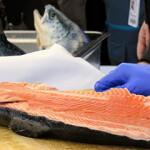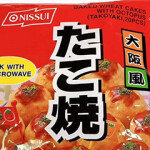Seafood importing countries could lock out illegal fish with better control schemes, group says

Aligning countries’ seafood import control schemes would reduce cost burdens for seafood companies while helping prevent illegally caught fish from reaching global markets.
A coalition of NGOs is arguing that major seafood importing countries and Regional Fishery Management Organizations (RFMOs) need to ensure that their import regulations require the collection of 17 key data points that reveal the who, what, when, where, and how of seafood in the supply chain. Currently, a lack of data prevents cross-checking against authorization records – making it impossible to confirm the legality of imported seafood.
Among the most important information is data identifying who caught the fish, through a unique vessel identifier – ideally an International Maritime Organization number, which stays with the vessel regardless of changes in flag, ownership, or name. After that, knowing the species name helps prevent mislabeling or fraud, while knowing the catch date, location, area, and method, help determine legality.
Fully digital control systems that allow for the rapid exchange of data and cross-checking are also vital, Samantha Burgess, the head of European marine policy at the World Wide Fund for Nature's European Policy Office, told SeafoodSource.
"It could revolutionize the ability of government, markets, and consumers to understand the origin of the landed seafood, and drive change to ensure a more sustainable industry," Burgess said. "Better aligned import controls underpin efficient trading for legal operators and help close the net on IUU fishing."
More and more countries and regional fisheries management organizations are adopting import control schemes, which frequently don’t coordinate with each other. If systems don't align, the seafood industry could become burdened by disjointed management and an inability to share or cross-reference information. The United States and the European Union, the two largest seafood importers in the world, have the two main unilateral import control schemes, while Japan, the third-largest importer, participates in multilateral import control schemes through RFMOs.
Together, the E.U., the U.S., and Japan account for 64 percent of the market for seafood. Excluding trade within the E.U., the three regions account for about 56 percent of global seafood imports.
The E.U. and the U.S. are already highly aligned with the 17 best practices recommended by the coalition, with 76 and 71 percent alignment, respectively. But countries that rely on multilateral schemes through RFMOs, including Japan, have significantly lower levels of alignment – between 41 and 76 percent.
In 2008, the E.U. introduced a catch certification scheme covering all wild-caught fish imported from non-E.U. countries into the E.U., and which entered into force in 2010. In 2016, the U.S. introduced the Seafood Import Monitoring Program, which covers 13 types of seafood that are especially susceptible to fraud and IUU fishing. Japan is currently developing its own system and currently relies on the catch documentation schemes of RFMOs, meaning it only monitors a limited number of fisheries: southern bluefin tuna, Atlantic bluefin tuna, Patagonian toothfish, and bigeye tuna.
The E.U. currently requests 13 of the 17 data-points that the report recommends, while the U.S. requests 12. Those two systems are aligned in measuring 10 of the 17 data-points, suggesting that there is ample opportunity for harmonization and information sharing between the two. Greater alignment between the two systems could cut costs for fishermen and seafood companies bringing products into both regions.
If major seafood importing countries and RFMOs fail to harmonize their import regulations, it could lead to confusion and an additional bureaucratic burden for both fishermen and seafood companies, while allowing loopholes that unscrupulous operators can exploit.
New import control systems, especially those being developing in Japan, need to be aligned with existing unilateral systems, such as those in the E.U. or U.S., Burgess said. Leading seafood exporting countries, such as Thailand, have recognized the need for close alignment on the key data elements and have embraced electronic data exchange, she added.
"The use of fully digital control systems as opposed to paper-based ones will mean less burden for fishers and companies in seafood-exporting countries and quicker analysis and better cross-checking of data in market states," Burgess said. "Ultimately, harmonized import controls are a benefit to market states, RFMOs, and exporting states.”
Currently, no international body mandates that importing countries collect these data-points. The United Nations’ Food and Agriculture Organization (FAO) adopted voluntary catch documentation guidelines in 2017, naming eight core elements, including information on catch and landing, transshipment activity, exported products, exporter identity, and export details. The coalition used the FAO’s guidelines as a baseline.
Though the FAO could strengthen its guidelines, the responsibility ultimately lies with importing countries, which essentially act as gateways to consumers.
"Fishermen and other supply chain actors will already have some of this data, for example, for other compliance and monitoring purposes," Burgess said. "But if the 'gateway' doesn't ask for it, there is no reason to hand it over."
Photo courtesy of Antoni Halim/Shutterstock






Share